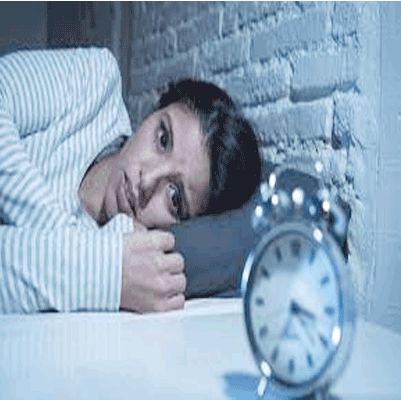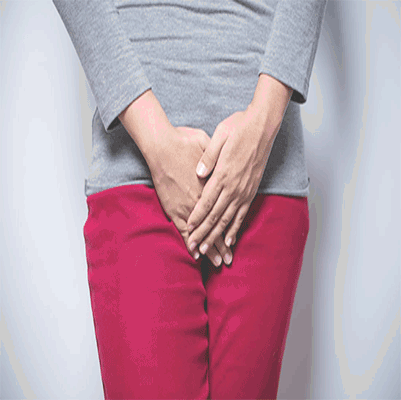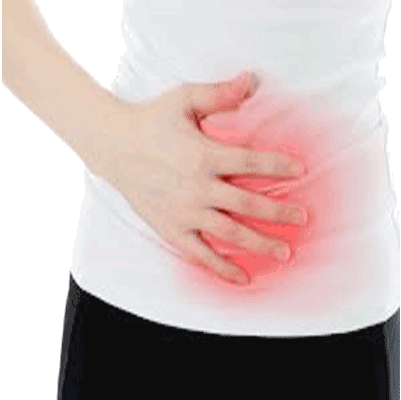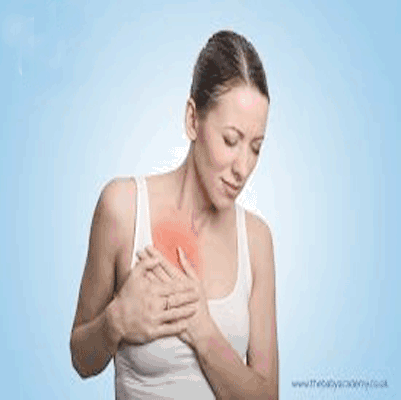Female Height
Female Height Growth – Unlock Your Natural Potential with Homeopathy ?
Overview
Many young girls and women feel conscious about their short height, which can affect their self-confidence, personality, and opportunities in life.
Height depends on genetics, hormones, nutrition, and lifestyle. With Homeopathy, natural growth can be stimulated safely – without side effects. ?
Causes of Short Height in Females
-
Genetic factors (family history of short stature)
-
Hormonal imbalance (thyroid problems, growth hormone deficiency)
-
Poor nutrition in childhood or adolescence
-
Chronic illnesses (long-standing diseases)
-
Early puberty (menstruation starting too soon)
-
Lack of exercise & improper lifestyle
-
Emotional stress & poor sleep
Effects of Short Height (if untreated)
-
Low self-confidence & personality concerns
-
Inferiority complex in society
-
Weak bones & posture issues (back pain, stiffness)
-
Emotional stress, anxiety, and even depression
Homeopathic Treatment for Height Growth
Homeopathy works by treating the root cause and activating the body’s natural growth potential.
Balances hormones naturally
Improves bone & muscle development
Enhances nutrition absorption
Boosts immunity, stamina & energy
Commonly Used Homeopathic Remedies (given only after case study):
-
Baryta Carbonica – for delayed growth & development
-
Calcarea Phosphorica – for weak bones & poor nutrition
-
Silicea – for stamina & strength
-
Thuja – for hormonal balance
-
Symphytum – for bone growth & repair
Why Choose Spaks Homeopathy?
Personalized treatment – every girl’s growth pattern is unique
100% Safe & Natural – no artificial boosters, no side effects
Boosts overall health, confidence & personality
Expert care in Female Disorders, PCOD, Thyroid, Growth Issues & more
Address: E-38, Budh Vihar, Badarpur, New Delhi – 110044
Email: info@spakshomeopathy.com
Phone: +91 8700458818
At Spaks Homeopathy, we don’t just focus on height – we help young women achieve their full growth potential, confidence, and a healthy personality. ?

Hair Loss-
Hair Loss? Don’t Worry – Regain Your Confidence with Homeopathy! ?
No harsh chemicals • 100% Safe • ? Natural & Effective
Causes of Hair Loss:
Stress & Anxiety
Hormonal Imbalance (Thyroid, PCOD, Pregnancy)
Dandruff & Scalp Infections
Nutritional Deficiency
Genetics & Overuse of Chemicals
Effects if Ignored:
Thinning Hair | Baldness | Low Confidence
Homeopathy Benefits:
Stops Hair Fall Naturally
Boosts New Growth
Strengthens Roots & Scalp
Corrects Hormonal Imbalance
Top Remedies: Natrum Mur, Phosphorus, Lycopodium, Silicea, Thuja
Spaks Homeopathy – Your Hair, Skin & Confidence Partner!
+91 8700458818 | info@spakshomeopathy.com
Don’t just cover hair loss, treat it from the root!
This version is short, punchy, and visually engaging, perfect for reels/captions.

Hormonal Disbalance
Hormonal Imbalance – A Hidden Health Issue ?
Overview
Hormones are the body’s natural chemical messengers that regulate growth, metabolism, mood, fertility, energy, and overall well-being.
When these hormones become imbalanced, the entire body’s functioning gets disturbed.
In women, it often leads to PCOD/PCOS, thyroid issues, irregular periods, mood swings.
In men, it can cause low testosterone, infertility, fatigue, and sexual weakness.
Causes of Hormonal Imbalance
-
Stress, anxiety & unhealthy lifestyle
-
Poor diet & nutritional deficiencies
-
Thyroid dysfunction (Hypo/Hyperthyroidism)
-
PCOD/PCOS in females
-
Pregnancy, menopause & puberty changes
-
Excessive use of chemical medicines/contraceptives
-
Lack of proper sleep & exercise
Effects if Untreated
-
Irregular periods, infertility problems
-
Sudden weight gain or weight loss
-
Hair fall, acne, oily skin
-
Mood swings, depression, anxiety
-
Low energy, fatigue, poor concentration
-
Male infertility & sexual weakness
-
Higher risk of diabetes & thyroid-related complications
Homeopathic Treatment for Hormonal Imbalance
Homeopathy treats the root cause, balances hormones naturally, and restores complete health.
regulates thyroid, periods & reproductive health
Boosts energy, metabolism & immunity
Improves mood, sleep & emotional balance
Controls hair fall, acne & skin disorders
100% safe for women (pregnancy/menopause) & men – no side effects
Commonly Indicated Medicines (selected after individual case study):
-
Sepia – For irregular periods, mood swings, irritability
-
Lachesis – For menopause complaints, hot flushes, headaches
-
Calcarea Carb – For obesity, weakness, thyroid imbalance
-
Ignatia – For stress-related hormonal disturbances
-
Pulsatilla – For delayed or irregular periods, emotional imbalance
Why Choose Spaks Homeopathy?
Root cause healing – not just temporary relief
Personalized & gentle treatment
Safe for long-term use, no side effects
Expertise in PCOD, Thyroid, Infertility, Male/Female Disorders, Skin & Hair Problems
Address: E-38, Budh Vihar, Badarpur, New Delhi – 110044
Email: info@spakshomeopathy.com
Phone: +91 8700458818
Spaks Homeopathy – Balance Your Hormones, Balance Your Life! ?

Insomnia-
Insomnia – Sleepless Nights & Homeopathic Healing ?
Overview
Insomnia is a condition where a person has difficulty falling asleep, staying asleep, or waking up too early.
It’s more than just a few restless nights – poor sleep affects mind, mood, energy, and overall health.
Lack of proper rest drains your body, makes the mind restless, and slowly disturbs your lifestyle.
Causes of Insomnia
-
Stress, anxiety, and depression
-
Excessive mobile/TV use at night ?
-
Caffeine, alcohol, or smoking
-
Chronic pain (arthritis, migraine, asthma)
-
Hormonal imbalance (thyroid, menopause)
-
Unhealthy lifestyle & irregular sleep patterns
Effects if Untreated
-
Constant fatigue, weakness & poor concentration
-
Mood swings, irritability, and anxiety
-
Memory loss & low productivity
-
Weak immunity & frequent health issues
-
Higher risk of heart disease, hypertension & diabetes
-
In the long run → risk of depression and severe mental health disorders
Homeopathic Treatment for Insomnia
Homeopathy gently restores mind-body balance, calms the nervous system, and promotes natural sleep.
Relieves stress, anxiety & overthinking
Improves deep, refreshing, and natural sleep ?
Treats the root cause (emotional, hormonal, lifestyle-related)
100% safe – no addiction, no side effects
Commonly Used Remedies (chosen after case study):
-
Coffea Cruda – Overactive thoughts, sleeplessness from excitement
-
Ignatia – Emotional stress, grief, or shock-related insomnia
-
Nux Vomica – Sleeplessness due to overwork or late-night habits
-
Passiflora – Nervous exhaustion, helps in deep sleep
-
Arsenicum Album – Restlessness, fear, frequent waking at night
Why Choose Spaks Homeopathy?
Root-cause healing – not just temporary sleep aids
Personalized medicines – based on your unique symptoms
Safe & natural – suitable for men, women, and elderly
Improves emotional balance, relaxation & overall health
Address: E-38, Budh Vihar, Badarpur, New Delhi – 110044
Email: info@spakshomeopathy.com
Phone: +91 8700458818
Spaks Homeopathy – Sleep Naturally, Live Happily! ??

Leukorrhea
Leukorrhea – A Common Female Problem & Homeopathic Healing with Spaks
Overview
Leukorrhea is a very common condition in women. A mild, clear vaginal discharge is normal, but when it becomes excessive, foul-smelling, or colored, it indicates an underlying health issue. It not only causes weakness and fatigue but also affects emotional health and confidence.
Causes of Leukorrhea
-
Hormonal imbalance
-
Poor genital hygiene
-
Infections (fungal / bacterial / STD)
-
Weak immunity
-
Nutritional deficiencies, anemia
-
Stress and emotional strain
-
Digestive issues or constipation
Effects if Left Untreated
-
Constant weakness, fatigue
-
Irritation, itching, burning
-
Foul-smelling discharge
-
Backache & pelvic pain
-
Increased risk of infertility
Homeopathic Treatment
Homeopathy focuses on treating the root cause – improving immunity, restoring hormonal balance, and healing both body & mind. Medicines are safe, gentle, and without side effects.
Commonly Used Medicines (after case study):
-
Sepia – Irritability with pelvic pain and discharge.
-
Calcarea Carb – Profuse, milky discharge with weakness.
-
Pulsatilla – Thick, yellow discharge with mood swings.
-
Kreosotum – Offensive, irritating discharge.
-
Borax – White discharge with burning sensation.
Why Choose Spaks Homeopathy?
Root-cause healing approach
Personalized medicines for every individual
100% Safe & Natural – no side effects
Boosts physical energy & emotional balance
Address: E-38, Budh Vihar, Badarpur, New Delhi – 110044
Email: info@spakshomeopathy.com
Phone: +91 8700458818
At Spaks Homeopathy, we don’t just treat Leukorrhea, we help women regain their health, confidence, and natural balance. ?

Lower Abdomen Pain
Overview
The abdomen is the region between the chest and pelvis, housing vital digestive organs like the intestines, liver, stomach, pancreas, and gallbladder.
The lower right portion of the abdomen contains part of the colon and, in women, the right ovary and fallopian tube.
Pain in this area can result from various causes – some minor (like indigestion or constipation) and others serious (such as appendicitis or ectopic pregnancy).
Recognizing the underlying cause is crucial, as certain conditions require urgent medical attention.
Symptoms
Pain in the lower right abdomen may be accompanied by:
-
Fever
-
Diarrhea
-
Constipation
-
Bloating
-
Nausea
-
Vomiting
-
Loss of appetite
-
Pain that worsens with movement or pressure
Possible Effects (If Untreated)
-
Appendicitis rupture → life-threatening infection (peritonitis)
-
Blocked intestine → severe pain, bloating, inability to pass stool/gas
-
Ovarian cyst rupture (women) → internal bleeding, severe pelvic pain
-
Infections → can spread to other organs and cause complications
-
Chronic discomfort → poor digestion, fatigue, weight loss
Treatment
1. Conventional Medical Treatment
Treatment depends on the exact cause:
-
Appendicitis – emergency surgery (appendectomy)
-
Constipation/IBS – laxatives, dietary fiber, hydration
-
Gastroenteritis – rest, fluids, sometimes antibiotics
-
Kidney stones – pain management, medication, or removal procedures
-
Gynecological causes (ovarian cyst, ectopic pregnancy) – medication or surgery
2. Lifestyle & Home Remedies
-
Stay hydrated
-
Eat light, fiber-rich meals
-
Avoid foods that cause gas and bloating
-
Rest and avoid strenuous activity until pain subsides
-
Apply a warm compress for mild cramping (if not infection-related)
3. Homeopathic Support (Complementary)
-
Colocynthis – for cramping abdominal pain relieved by pressure
-
Nux vomica – for abdominal pain linked to indigestion or constipation
-
Belladonna – for sudden, intense abdominal pain with fever
-
Lycopodium – for bloating and right-sided abdominal discomfort
(Always under professional guidance.)
Important: If the pain is sudden, severe, or accompanied by fever, vomiting, or blood in stool/urine, seek emergency medical help.

Mastitis
Overview
Mastitis is an inflammation of breast tissue, usually caused by an infection. It leads to breast pain, swelling, warmth, and redness, and may also cause fever and chills.
It most commonly affects breastfeeding women (lactation mastitis), but it can also occur in non-breastfeeding women and even in men.
Lactation mastitis can make mothers feel exhausted and sometimes leads them to stop breastfeeding earlier than planned. However, continuing breastfeeding, even during treatment, is usually recommended as it helps in recovery and benefits the baby.
Symptoms
-
Breast tenderness or warmth to the touch
-
Breast swelling
-
Thickening of breast tissue or a lump
-
Pain or burning sensation (especially while breastfeeding)
-
Skin redness, often in a wedge-shaped area
-
General feeling of illness
-
Fever of 101°F (38.3°C) or higher
Effects (If Untreated)
-
Formation of a breast abscess (pus collection)
-
Severe pain leading to difficulty in breastfeeding
-
Reduced milk supply
-
Risk of spreading infection to other areas (rare but possible)
-
Emotional stress, fatigue, and early weaning
Treatment
Medical Treatment
-
Antibiotics to treat bacterial infection (e.g., dicloxacillin, cephalexin)
-
Pain relievers (acetaminophen or ibuprofen) for pain and fever
-
Warm compresses on the affected breast to ease discomfort
-
Continue breastfeeding or pumping to empty the breast and prevent milk stasis
-
Adequate hydration and rest
Home Care
-
Gentle breast massage to help clear blocked ducts
-
Wear a supportive bra
-
Change breastfeeding positions to help drain all milk ducts
Homeopathic Support (Complementary, not substitute)
-
Phytolacca decandra – for hard, painful, swollen breasts
-
Belladonna – for sudden inflammation, redness, and throbbing pain
-
Bryonia – for painful breasts worsened by movement
-
Hepar sulphuris – if abscess formation begins

Menopause
Menopause
Overview
Menopause is the natural biological process that marks the end of a woman’s menstrual cycles and fertility. It is diagnosed after 12 months without a period and usually occurs between ages 45 and 55.
Most symptoms actually begin during perimenopause (the transition years before menopause). Some women experience little to no discomfort, while others may face bothersome or long-lasting symptoms.
Menopause itself is not a disease but a normal stage of life.
Symptoms
-
Irregular periods
-
Vaginal dryness
-
Hot flashes and night sweats
-
Chills
-
Sleep problems
-
Mood swings or irritability
-
Weight gain and slowed metabolism
-
Thinning hair and dry skin
-
Loss of breast fullness
Effects / Complications
Long-term effects of menopause may include:
-
Bone loss (osteoporosis) due to reduced estrogen, leading to fractures
-
Increased risk of heart disease
-
Urinary incontinence and recurrent urinary infections
-
Sexual problems (painful intercourse, low libido)
-
Emotional changes (anxiety, depression, memory issues)
-
Reduced skin elasticity and aging signs
Treatment
Conventional / Medical
-
Hormone Replacement Therapy (HRT): Restores estrogen/progesterone to relieve hot flashes, night sweats, and vaginal dryness (used with caution).
-
Non-hormonal medicines: Antidepressants (SSRIs), blood pressure drugs, or epilepsy drugs for hot flashes and mood swings.
-
Vaginal estrogen creams or rings: For dryness and painful intercourse.
-
Calcium and Vitamin D supplements: To prevent bone loss.
-
Lifestyle changes: Healthy diet, exercise, stress management, and good sleep hygiene.
Homeopathic Supportive Remedies (under expert guidance)
-
Lachesis mutus – for hot flashes, irritability, and sleep disturbance
-
Sepia – for mood swings, vaginal dryness, and low libido
-
Pulsatilla – for emotional sensitivity and irregular periods during perimenopause
-
Sulphur – for excessive heat, sweating, and skin problems
-
Calcarea carbonica – for weight gain, fatigue, and bone weakness
This version gives a clear, detailed explanation with symptoms, effects, and both medical & homeopathic treatment options.
